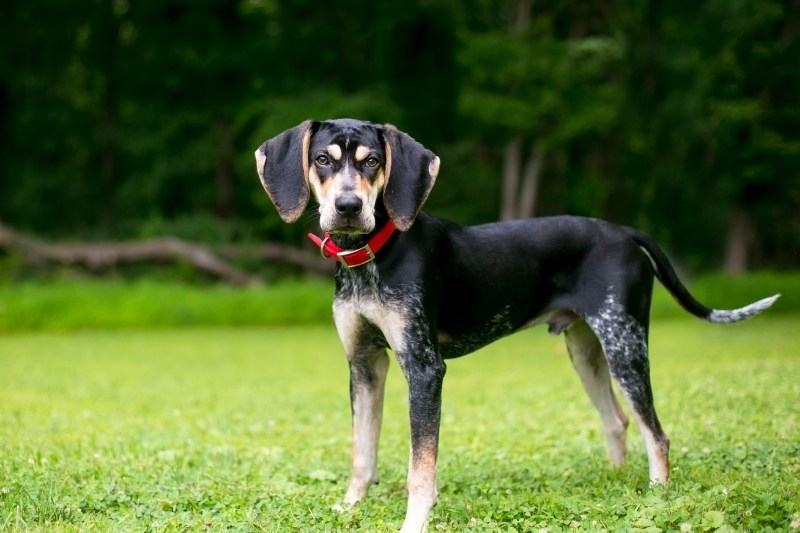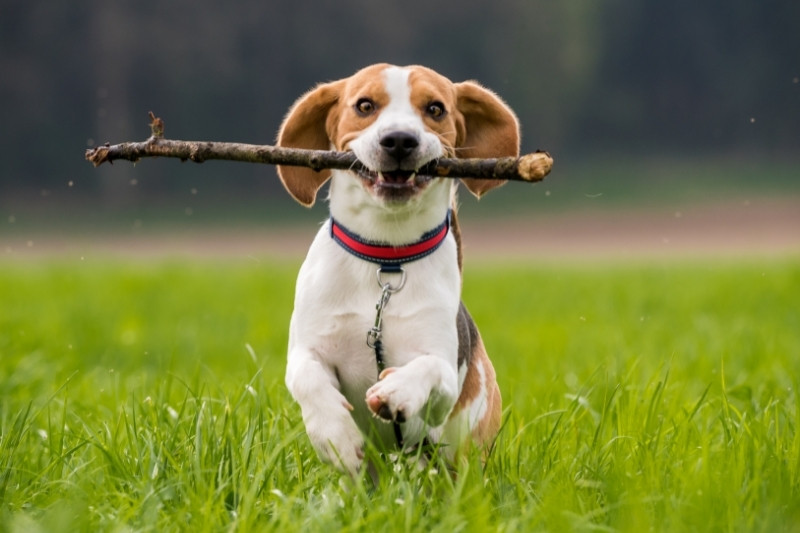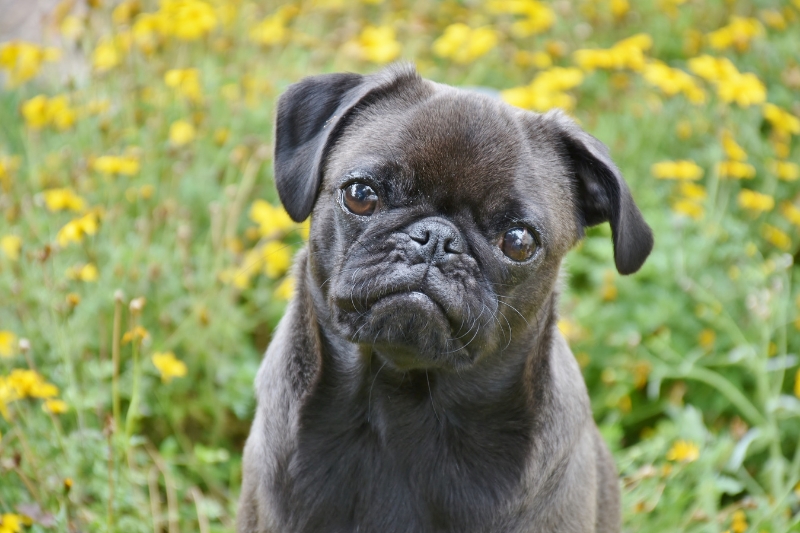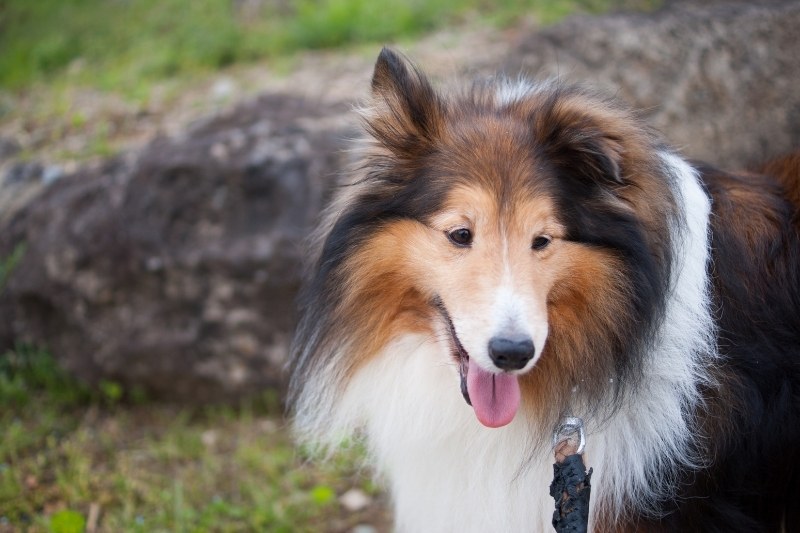Mastiff vs Bloodhound: what are the differences?
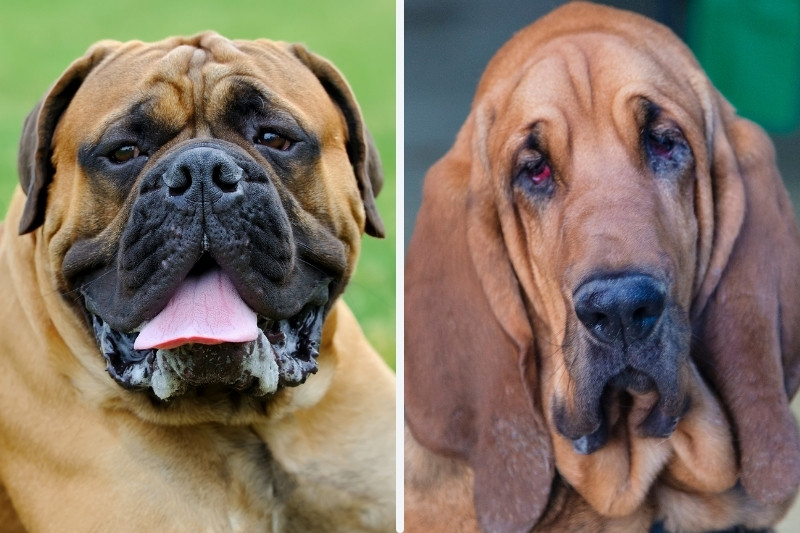
When adopting a dog and welcoming them into your family, you need to be sure that they're the perfect dog for you. If your choice is between the Mastiff or Bloodhound, then here are the differences between the breeds to keep in mind as you make your final decision.
Physical Differences
To start, both dogs have differing coats and slight build differences, which may impact your choice.
Coat Differences
The coat of the Mastiff breed is similar to the double coat of a Retriever breed or a Saint Bernard. The coat results from these dogs being from the working dog group trained and bred to assist humans.
The tasks the working dog group would help with include herding livestock or collecting prey that hunters shot down. Mastiffs have a waterproof coat for this reason.
On the other hand, the Bloodhound breed has a smooth coat and requires brushing to distribute the skin's oil throughout the coat. It's less dense than the Mastiff's coat, but that doesn't mean it requires any less grooming.
The two coats are relatively similar between the breeds, requiring weekly brushing and monthly grooming appointments to keep your dog's coat in excellent health. If you don't have the time to take care of a demanding long coat, then either breed is ideal for your family.
In addition, the Mastiff breed comes in shades of lighter browns, like tan and fawn, while Bloodhounds come in darker shades of brown, like liver and red. So, if you have a lot of light-colored furniture, then maybe a Mastiff will be better, so you don't have to worry about the fawn fur showing quite as badly on the couch.
Moreover, you can groom the two dogs at home since they're relatively simple to groom.
Build Differences
Grooming and coats aren't the only physical difference to take into account. For instance, the Bloodhound and the Mastiff are both large-sized dogs, and regardless of which breed is chosen, you will have to ensure your home can accommodate their size.
According to the American Kennel Club, Bloodhounds can grow between 23-27 inches at the shoulder. The breed has a weight cap of 110 lbs. They're sizeable dogs, and anyone considering becoming their owners should keep in mind that they won't stay the small size of Bloodhound puppies forever.
In comparison, the Mastiff breed comes in even larger than the Bloodhound. If you're looking for a large and intimidating dog to keep watch over your house, then the breed might be ideal as they can grow from 27.5 inches and up, and that's the female's height. Males are, at minimum, 30 inches at the shoulder. The weight cap for the Mastiff breed is a whopping 230 lbs.
Health Differences
The health concerns that you should be aware of in regards to the Bloodhound breed include:
- Hip dysplasia
- Elbow dysplasia
- Heart problems
- Eye problems
- Cataracts
Health concerns that you should be aware of when adopting a member of the Mastiff breed include:
- Eye problems
- Heart problems
- Seasonal allergies
- Eye dysplasia
- Hip dysplasia
- Elbow dysplasia
- Epilepsy
When you adopt a breed that you're aware is notorious for health problems, then you should inform your vet about your pet's history. They can check during each visit for signs of any of these problems. Also, owners can ask any reputable breeder for the medical history of the puppies' parents.
Personality differences
Along with physical traits, the behaviors of the two puppies matter as well.
Disposition differences
The Bloodhound is of the hound group, meaning they were bred for hunting and tracking during hunting trips. However, they're stubborn, independent, and vocal dogs. If you don't want a pup that will bark, then you probably won't be the best owner for a Bloodhound.
However, they're amiable dogs, too, and good with children. Their temperament is reserved with a slight leaning towards excitable behavior. They're affectionate, but you won't have to worry about their drool getting all over you.
On the other hand, Mastiffs are good with small children and will also make fantastic family dogs. If your child is overly affectionate with any pup you get, then the Mastiff will be a good choice as their temperament is patient.
They're incredibly affectionate and love their owners. They can be a bit stubborn — suitable for a working pup who will work but less so for a canine who is just meant to be a companion. They don't bark at all when compared to a Bloodhound. They may also drool but not quite as much as the other canine.
Also, both breeds require daily exercise; however, the Bloodhound may be up to more rigorous exercise than the Mastiff breed. The former can enjoy hiking for hours while the latter only needs an hour of exercise before hitting the hay.
Which is right for you?
Both Mastiff and Bloodhound breeds are relatively independent canines with their behavior and temperament being typical for active dogs. They will keep watch over your house and protect their home, making them good choices for an owner with children who sleep better knowing that they're protected. So, you can't go wrong with picking one or the other.

Siobhan Brier is an animal and dog lover who will rudely interrupt conversations to point out cute dogs in public when necessary. She works as a content writer and co-owner of a small content writing agency in English, Spanish, and Portuguese called Inkless. As an online worker she travels internationally, and she is currently based in Mexico. She loves reading and writing, and she recently finished a novel based on her time living on the remote Galapagos Islands, a place known for its plentiful, endemic wildlife population!

